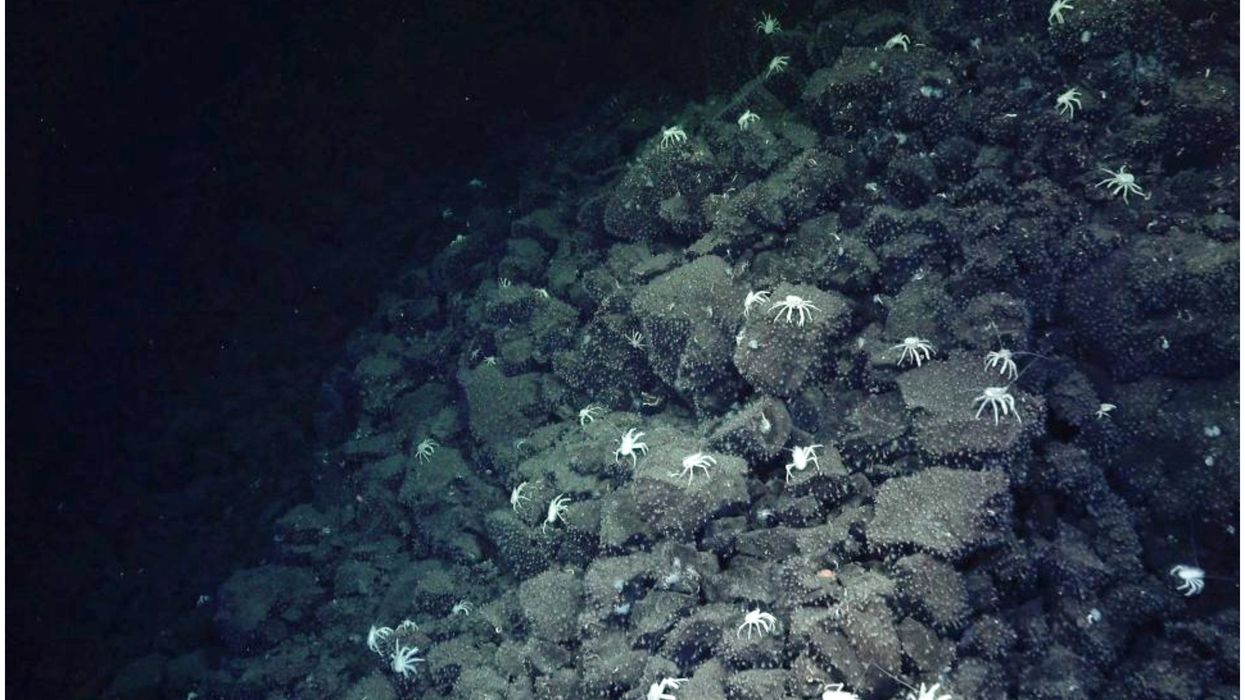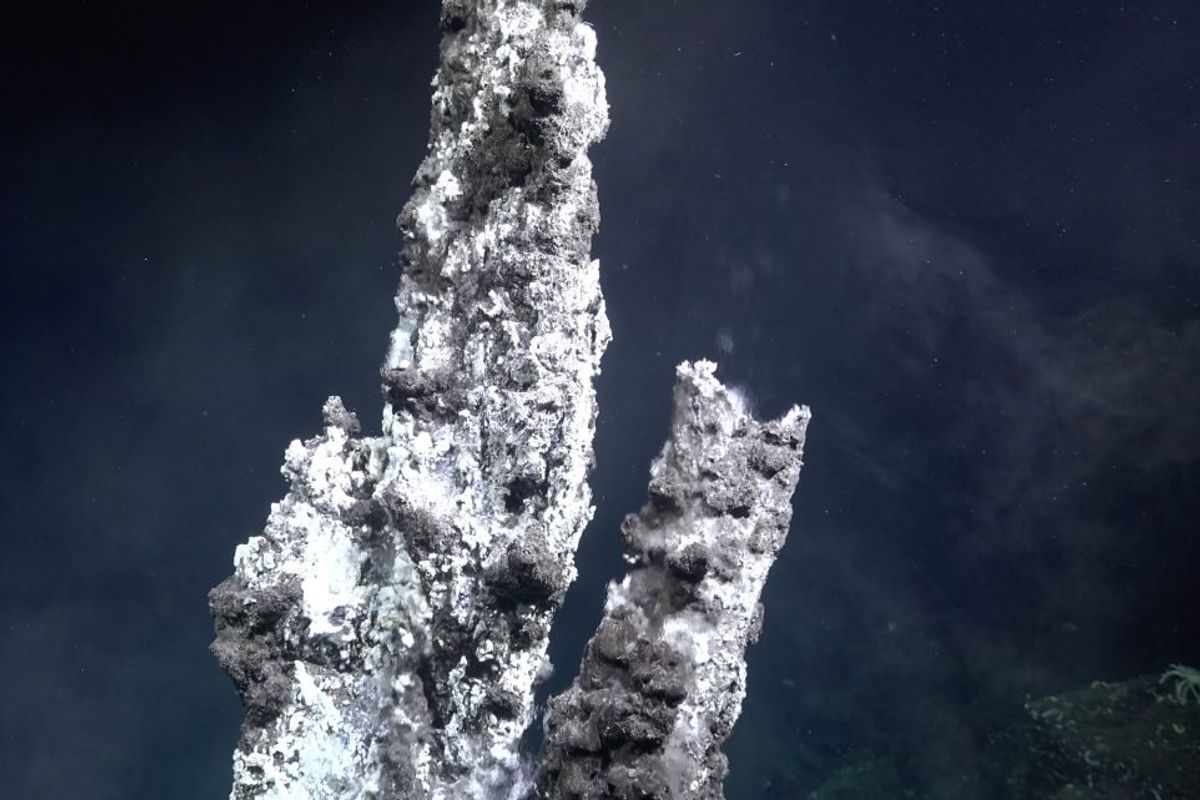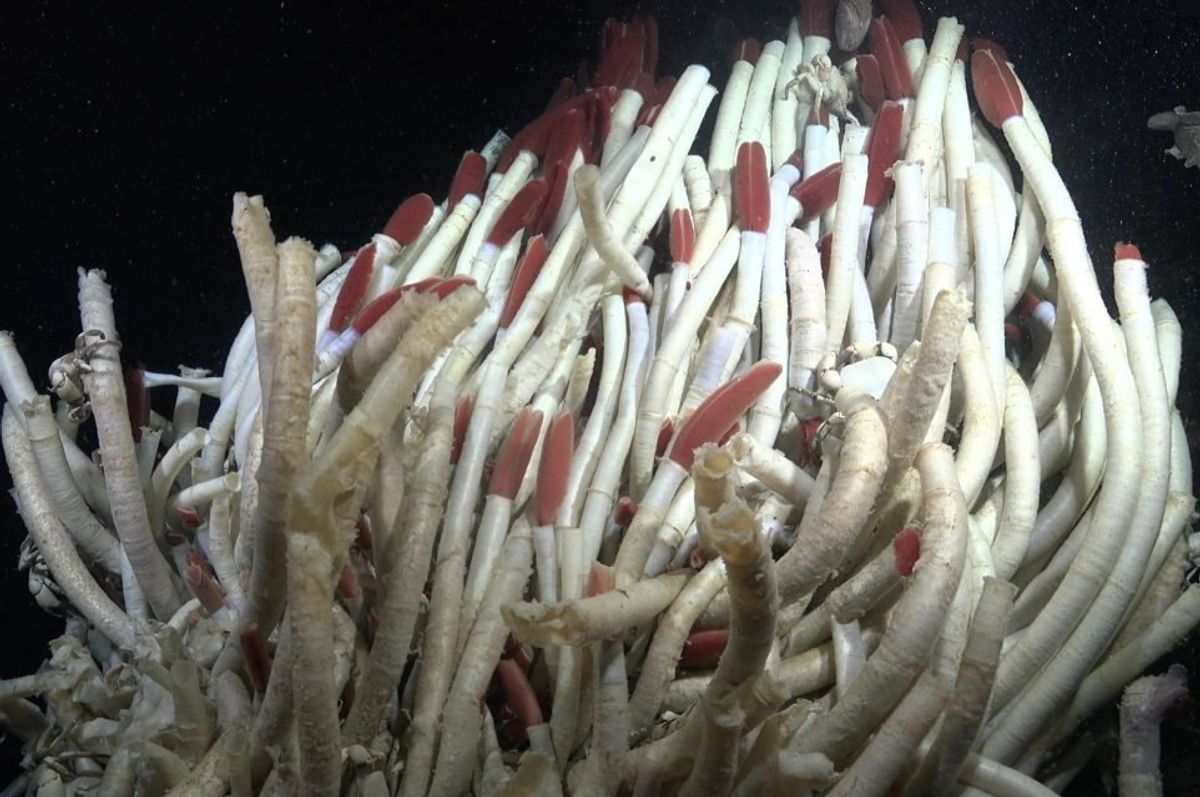Harriet Brewis
Jul 10, 2025

A trail of squat lobsters helped researchers discover previously unknown hydrothermal vents
(Schmidt Ocean Institute)
We’ve heard of following the yellow brick road, and even following the white rabbit, but scientists have just made a landmark discovery by following a trail of ghostly crabs.
For some 20 years, experts believed there was a hydrothermal vent field off the western Galápagos Islands, but they hadn’t been able to pinpoint its exact location.
However, while exploring the area they spotted a galatheid crab (also called a squat lobster), and then another, and then another.
They traced the crustaceans excitedly as their number grew until, finally, they were led to the elusive hydrothermal goldmine.
There are only around 550 known hydrothermal vents in the world, only half of which have actually been seen. The rest have been identified via chemical and temperature signatures in the surrounding water, as Live Science notes.
Hydrothermal vents are formed when water seeps into the rock of the seafloor at either a plate margin or where magma is rising to the surface in another part of the plate.
The magma heats the water, which causes it to rise, before it’s expelled through fissures in the rock, often forming what are known as chimneys.

The new Galápagos field, discovered thanks to the crabs which aggregate around deep-sear vents, extends more than 98,800 square feet (9,178 square metres), and consists of five geyser-like chimneys and three hot springs.
The highest temperature so far recorded there is a staggering 288C (550F).
As well as the the geysers, hot springs and crabs, the team, from the Schmidt Ocean Institute, found a thriving ecosystem of incredibly adapted organisms.
"There were giant tube worms, which can be a couple (of) metres long. There were very large clams, sometimes called dinner plate clams, as well as mussels," said Roxanne Beinart, a biological oceanographer who co-led the expedition.

To locate the hydrothermal field, the researchers first began searching the general region where a chemical anomaly had been identified in 2008.
"One of the anomalies that we look for is a lens of low oxygen water," expedition co-leader Jill McDermott, a chemical oceanographer at Lehigh University in Pennsylvania, told Live Science.
"Oxygen is completely removed through circulation in the seafloor. So the water that's expressed at the seafloor is devoid of oxygen."
The team then followed this plume of oxygen-poor water until it disappeared — implying they were close to the vent.
They then launched a remotely operated vehicle to inspect the seafloor and traced the breadcrumb trail of crabs to the vent field itself.
“With 75 per cent of the seafloor still to map, finding this new vent field shows how much we still have to learn about our planet and those who live on it,” the Schmidt Ocean Institute’s Executive Director Dr Jyotika Virmani said in a statement.
“I am continually amazed by the otherworldly beauty of our seafloor and look forward to uncovering more.”
And what did the team christen the new hydrothermal vent field?
Why, the “Sendero del Cangrejo,” or “Trail of the Crabs,” of course.
This article was originally published on 27 November 2023
Why not read:
Biggest-ever simulation of the universe could finally explain how we got here
How your summer holiday could be helping aliens detect Earth from 200 light years away
Sign up for our free Indy100 weekly newsletter
Have your say in our news democracy. Click the upvote icon at the top of the page to help raise this article through the indy100 rankings
Top 100
The Conversation (0)













